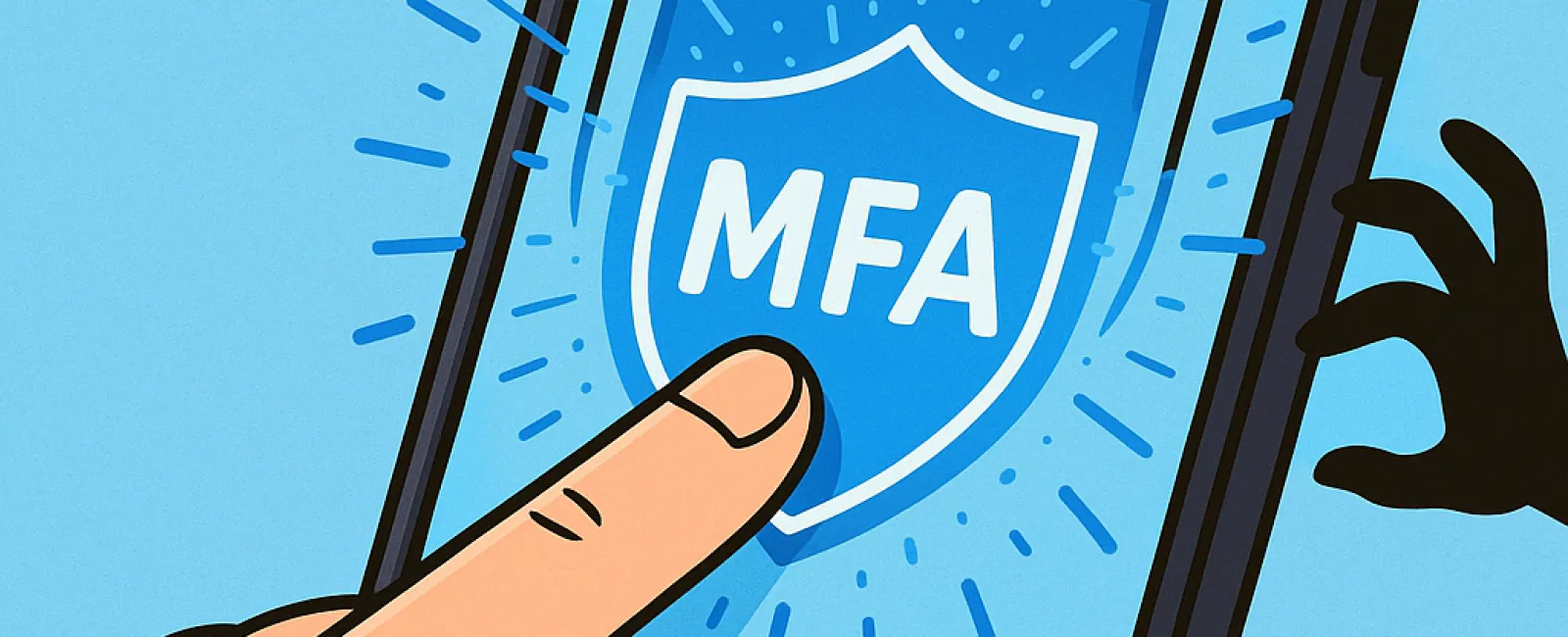October 27, 2025
Just like you never skip on wearing a seat belt or locking your office doors, going online without multifactor authentication (MFA) is taking an unnecessary risk.
MFA acts as a powerful second barrier protecting your digital world. Instead of depending solely on a password—which can easily be stolen, guessed, or phished—MFA requires an additional verification step such as a text message code, an authentication app, or biometric scans like fingerprints. This extra shield means that even if someone steals your password, they can't access your accounts without completing the second verification.
One Simple Step Creates a Strong Defense
Think of your password as locking the front door to your home at night. MFA is like activating a full security system to keep you extra safe. While it might seem optional, isn't it reassuring to know your info stays secure even if one security measure fails?
That's the core benefit of MFA: it adds a quick, extra confirmation step proving it's really you logging in. Sometimes called "two-step verification," "two-factor authentication," or "one-time password," these terms all highlight the need for multiple layers of identity confirmation before access is granted.
MFA can come in many forms: confirmation emails during account sign-up, bank security questions, text codes, push notifications, or phone calls. The best part? Most verify with just a quick tap or simple code entry.
How MFA Stops Cyber Threats Cold
From your perspective, MFA is often seamless and fast—just tap a button or type a code. But for hackers, this extra hurdle can make all the difference. If someone tries to breach your account, MFA triggers a notification or code request, alerting you immediately about suspicious activity. This early warning lets you quickly secure your account before any data is compromised.
Even if an attacker convinces an employee to reveal their password, they can't get past the extra authentication step. According to Microsoft's research, having MFA enabled reduces your risk of account takeover by over 99.2%, soaring to 99.99% with full MFA protection.
Where You Must Enable MFA for Maximum Security
Prioritize activating MFA on key accounts such as:
- Online banking and financial services
- Email accounts and cloud storage platforms
- Social media profiles
- Work-related logins containing client or sensitive data
Enabling MFA is usually straightforward. Most leading services include built-in MFA options—just select the method that fits your routine best and incorporate it seamlessly. Using an authenticator app boosts protection, especially for employees accessing company systems.
In summary, MFA is a free, quick, and highly effective way to neutralize most hacking attempts. Spending a few moments setting it up today can prevent costly losses and lengthy recoveries tomorrow.
The simplest way to implement MFA is to reach out to your IT provider. A skilled managed service provider (MSP) can ensure a smooth, hassle-free setup. If you're searching for cybersecurity expertise, click here or call us at (925) 766-4005 to schedule a 15-Minute Discovery Call with our security experts today.





